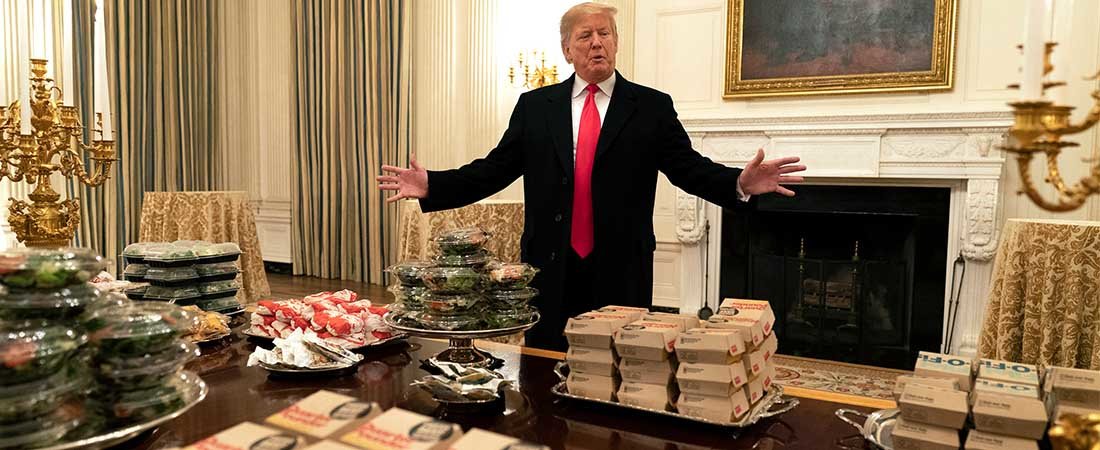Twenty-five percent of the US government has been shutdown for over 25 days, the longest impasse in American history. There is no visible way out of the standoff between President Trump and Congressional Democrats over border security. S&P Global Ratings estimates that the shutdown reduces the US GDP by $1.2 billion per week. Those costs will soon exceed $5 billion, more than the funding request by President Trump to build a Southern border wall.
About 800,000 federal workers are “furloughed,” while hundreds of thousands are working without pay – including diplomats, aviation safety inspectors, air traffic controllers, airport security screeners and, ironically, border protection officers. Trash piles up in previously pristine National Parks, and concerns grow around food safety and medical research where thousands of workers have been prevented from showing up at work and millions in research projects frozen.
How did the largest economy in the world reach this point and what does this mean for the rest of the world?
“Build The Wall”
President Trump made immigration the cornerstone of his 2016 campaign, often portraying illegal immigrants – notably from Mexico and Central America – as a threat to US security. His “build the wall” chants at rallies generated excitement from his base and helped propel Trump to an Electoral College victory. As the 2020 presidential campaign begins, Trump believes that his base is the key to his re-election and he is willing to take a strong stand on the wall to keep his base engaged.
Democrats are vehemently opposed to a wall and after two years of watching Republicans control the White House, the Senate, and the House – are standing their ground. While Democrats at least nominally support more security measures at the Southern border, most, at this point, won’t budge on Trump’s wall.
How we got here
Following the Midterms, President Trump felt pressure to deliver on his campaign promise before Democrats took control of the House. Trump rejected a spending bill last month that would have kept the government funded through February after blowback from his core supporters, declaring that he would not sign anything that didn’t include $5.7 billion for a border wall.
Republicans had attempted to use their last weeks in control of two branches of government to fulfill Trump’s campaign pledge, but they lacked the votes in the Senate. Funding lapsed on 22 December and the government shutdown.
Democrats passed a series of bills to reopen the government upon taking control of the House, giving Trump $1.6 billion for border security. But they made it clear that they would not support any funds for a border wall. Senate Majority Leader Mitch McConnell refuses to hold a vote on anything that Trump won’t sign.
Compromise offers floated by Vice-President Mike Pence have been rejected by Trump and when interim White House Chief of Staff Mick Mulvaney floated a compromise in a meeting with Democrats and President Trump – he was swiftly rebuked by the President. Both sides believe they are winning the shutdown and Senator McConnell continues to support the president instead of pushing for a deal.
What it means
Most parts of the US government are funded for the majority of 2019 but several departments – the Department of State, Department of Homeland Security, US Trade Representative, Food and Drug Administration, among others – are not and have been directly affected by the shutdown. The effects are reaching federal law enforcement, including the FBI, customs and border agents as well as the Coast Guard. Some airports have started closing terminals as air traffic controllers and TSA agents who are working without pay are starting to call in sick.
As the shutdown goes into its fourth week, the US economy is beginning to see the consequences. Initial public offerings are being delayed because employees at the Security and Exchange Commission are furloughed. January employment numbers are expected to be gloomy after unemployment claims leaped earlier this month. Fitch Ratings has warned that the US could lose its triple-A credit rating.
Is there a way out?
Shutdowns over the past 30 years have followed a pattern of declaring those that “cave” the loser of the shutdown. As the 2020 presidential election begins, neither party wants to anger its base voters or be viewed as weak on key issues. Compromise, previously a term elected officials promoted with pride, has become a dirty word and one that finds incumbents being challenged within their own party. With compromise in low supply the most direct way to end the shutdown is off the table. Polling consistently shows at least 50% of Americans blaming Trump and Congressional Republicans for the shutdown, compared to one third who blame Democrats, but both sides are seeing their core support strengthen, driving them to harden their positions on either side of this issue.
Trump has declared that he is willing to keep the government shutdown for months or years until he gets wall funding, even threatening to declare a state of emergency and build the wall using Department of Defense funds, a move that would face instant legal challenge and objections from his own party.
A quick solution will not come from Washington, DC, but rather pressure from voters. Absence rates for airport security agents have doubled at key airports – stretching wait times and trying the patience of travelers. Affordable housing contracts and rent subsidies will expire at the end of January. And come March 2019, the US debt limit will be reached, potentially adding further turmoil to American and international markets if Congress can’t agree a solution.
The fight over the border wall has transformed from a policy dispute to a protracted political campaign with no clear end in sight. It will take significant public pressure — or a natural or man-made disaster of some kind — to shake Washington out of its stupor.

